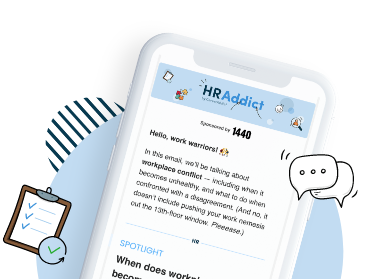From the late 18th century onwards, there have been drastic changes to the way humans do business every 50 years or so. This has largely been thanks to changing consumer habits, and the appearance of new technologies and inventions.
In recent decades, these changes seem to be coming all the more frequently, with companies and institutions scrambling to keep up in order to stay relevant, safeguard their profitability, and remain protected against legal and financial risks.
In this article, we will be discussing the ever-evolving subject of business ethics and compliance, looking at its significance and the ways you can cultivate it within your organization.
What is a culture of ethics and compliance?
A company that places big emphasis on industry compliance is one that can be said to have a strong ethical corporate culture. In other words, having a culture of ethics and compliance means that your organization upholds the safety and regulatory standards of the field you work in.
Although different laws and regulations apply to different industries, business ethics are often prevalent across the various sectors. Values such as transparency, fairness, accountability and compassion can inform the way a company operates, regardless of the industry it belongs to.
Why is it important?
Building a culture of ethics and compliance can positively impact your workplace in several ways. Let’s look at the main ones below:
It protects you from legal and financial risks
Regulatory non-compliance can manifest in a series of repercussions for an organization. These include receiving fines and penalties and, in some cases, having limitations imposed on the types of activities a company can engage in moving forward — both of which can seriously harm an organization’s financial wellbeing.
Non-compliance can also lead to legal action being taken against companies, including costly lawsuits. Take British Airways and TikTok, for example, who paid (roughly) $24 million and $16 million, respectively, for breaching the EU’s General Data Protection Regulation.
It safeguards your image and reputation
Legal battles are not just capable of draining a company’s financial resources; they also negatively impact businesses’ reputation, as clients and customers begin to associate them with questionable or outright ethically unacceptable practices.
At a time when consumers are becoming increasingly more conscious, companies will want to do their best to avoid getting swept up in scandals.
It creates a healthier work environment
Company-wide compliance and ethics training programs can foster an environment of trust and respect, from your most junior employee to your most seasoned executive. This can keep team members feeling motivated, happy and engaged, which positively impacts their productivity and keeps voluntary turnover to a minimum.
Steps to cultivate a culture of ethics and compliance
There are many steps you can take to nurture and sustain a culture of ethics and compliance in your organization. Let’s talk about it:
Step 1: Stay up to date with regulatory changes
Perhaps the only constant in an ever-changing business landscape is change itself. And (sadly for HR professionals and other business leaders) with the shifting business landscape comes an equally volatile regulatory landscape that must be kept under a watchful eye.
Staying up to date with the multitude of laws and regulations across the local jurisdictions, states and countries you operate in is imperative in ensuring that your organization is compliant.
As the KPMG team also shares in an article: “The regulatory landscape is constantly evolving, and understanding it demands a deep knowledge of the organization’s operations; past, present, and future.”
Step 2: Utilize ethics and compliance software
Although there is a lot to stay on top of and remember, the good news is that there is a plethora of compliance management tools available to business owners and HR leaders designed to make life easier.
These tools are built to help you stay up to date with best practices and regulatory changes in your field, as well as identify any oversights in your policies and come up with effective training for your staff.
There are also more specific tools such as sanction screening software which allows you to monitor your employees, contractors and vendors for non-compliance regardless of your industry.
Step 3: Update your company’s code of conduct
While staying up to date with regulatory changes in your field is the first step to building a culture of compliance, it’s not enough to simply be aware. These changes need to be reflected somewhere for everyone on the team to see; and a good place to start is your company’s code of conduct.
The contents of this document must be detailed, clear and specific, outlining all the legal and ethical expectations you have of your employees, alongside easy-to-understand examples of what is (and is not) acceptable behavior in the workplace.
To ensure that everyone on the team is on the same page, give a copy of your code of conduct to new joiners, and schedule company-wide email sends every time there is an update to your guidelines.
Step 4: Examine your internal processes
Evaluating how things get done within your workplace can help you uncover any instances of non-compliance and eliminate them. From how you recruit employees to how you conduct audits and handle incidents, it’s imperative to evaluate the steps in each process carefully. This will allow you to integrate regulations into your processes.
The good news is that, a lot of the time, industry regulations provide clear guidance on exactly what you need to be doing.
Take the Occupational Safety and Health Administration’s general industry requirements for example; they include easy-to-follow statements like “Hazardous conditions on walking-working surfaces are corrected or repaired before an employee uses the walking-working surface again”.
Step 5: Develop effective compliance training
Providing effective compliance training to your team is of the utmost importance in promoting ethical and compliant behavior in the workplace. To develop a great training program:
- Establish a clear understanding of your organization’s compliance requirements.
- Set specific outcomes and measurable goals for employees and executives alike.
- Utilize a combination of training methods, such as online courses and in-person seminars and workshops.
- Find the most engaging, memorable ways to convey information to employees — big, dry chunks of information will be hard to digest.
Step 6: Educate your leaders
In the words of serial entrepreneur and leadership expert Rachel Wells: “[As a leader], you are responsible for your own code of conduct, as you will likely have employees, not only from your direct team, but across your organization, looking to you as a role model and observing your behavior, work ethic, leadership style and character.”
It’s true: leading by example can be extremely effective, which is why you want your managers and executives to embody your company values, uphold your code of conduct and honor your internal processes.
Step 7: Educate your staff
As a boss, manager or HR specialist, you will want to ensure that your team members know exactly what’s expected of them, as well as what happens if they fail to meet your ethical and regulatory standards.
One of the best ways to do this is to establish regular internal communication, such as through email, sharing relevant updates and advice with your team.
Step 8: Roll out incentive programs
One approach that can be helpful in ensuring regulatory compliance within your business is rolling out employee incentives as part of your compliance and ethics program. When adhering to regulations and ethical standards can lead to recognition or reward, employees have an additional reason to strive to follow your guidelines.
As neuroscientist Tali Sharot writes for the Harvard Business Review, both punishment and reward can be effective in getting people to act (or not act) in certain ways. So, while it’s important to communicate the repercussions of non-compliance to team members, it’s just as important to reward adherence to rules.
Step 9: Facilitate anonymous reporting
Sometimes, employees may witness a colleague or supervisor behaving unethically or in non-compliant ways but find themselves reluctant to speak up due to fear of retaliation.
Making use of web-based whistleblowing systems or a telephone hotline can be a good solution to that, as it gives team members the opportunity to report incidences anonymously and securely. Submitting reports internally via email, letter or fax, on the other hand, can still lead to team members being identified by their writing style or IP address, which can be deterring.
Step 10: Take action
The final (and perhaps most important) step in establishing and maintaining a culture of ethics and compliance is to act.
Staying up to date with changes in regulations, evaluating company processes and giving employees a secure way of reporting incidents is only half the story; implementing changes where needed is what’s absolutely essential. Turning a blind eye to non-compliance will only harm your credibility and authority in your employees’ eyes.
Final thoughts
Compliance with business ethics, laws and regulations can make all the difference in gaining — or losing — your competitive edge.
The more closely you monitor regulatory changes in your industry, the quicker you can adapt and protect your organization from legal and financial risks. At the same time, you can preserve your image and reputation, retaining your existing clients or customers and attracting new ones.
We hope our how-to guide on developing and maintaining a culture of ethics and compliance has been useful. If you’ve got any questions or want to share additional tips with fellow business leaders, leave a comment below!
Streamline your sanction screening with Ethico
